You may not find this terribly rewarding unless you're included here, so this is a good time for casual and random browsers to turn back before they get too caught up in the sweep and majesty of the proceedings and can't let go.
26 October 2018

This is the enormous central square of Cuneo, the Piazza Tancredi Galimberti, at nearly 24,000m2, built in about 1800 after the destruction of the walls and much else by Napoleon's forces. It had to be large to accommodate the important silk market in the city at the time, and there is still a regular street market in the square every Tuesday. The Piazza is named for Tancredi "Duccio" Galimberti in 1945 in memory of a hero of the Resistance who was killed by the fascists in December 1944, and whose home faces onto the square. From 1943 to 1945 Cuneo was one of the most important centres of partisan resistance against the German occupation and is said to have been liberated by the partisans on 28 April 1945.

Cuneo, a city of about 56,000 inhabitants, is the capital and largest city of Cuneo province in the northwestern region of Piemonte, a province that includes Alba, Bra, Fossano, Mondovì, Savigliano, and Saluzzo, in that descending order of population. It's encircled by the Cottian and Ligurian Alps to the west and south and the Langhe hills to the east, and opens out onto the plain of the Po, Stura, and Tanaro rivers to the northeast towards Torino.

The city originated on a high point above the confluence of the Gesso and Stura rivers (the latter a tributary of the Tanaro), at the present Piazza Torino, and grew southwestward in a kind of 'wedge' shape (thus the city's name). There are signs of Ligurian and subsequent Roman habitations in the region, but the historical record for the city seems to have begun in the 12th century, when it's said that the population swelled with refugees from Milan after the Emperor Frederick I Barbarossa destroyed that city in 1162.

Time, before we get started, for a coffee. It's attested that in 1198 the Cuneesi declared themselves to be a free commune, under the protection of an abbey dependent upon the Bishop of Asti, in order to be free of harassments by the Marquises of Monferrato and Saluzzo, much as Mondovì and Savigliano did at about the same time. In 1210, however, Manfred II of Saluzzo occupied the city, which appears to have lost the protection of the Bishop of Asti, perhaps for its assistance provided to the Cathar 'heretics' fleeing from the crazy Albigensian Crusade in the French Languedoc.

In 1238, the Emperor Frederick II, called 'Stupor Mundi', officially recognized the freedom of Cuneo, and in 1251 a podestà was appointed to administer the city. But in fear of local warlords in 1259 the city allied itself with Charles of Anjou, the Count of Provence, on his way to making himself the King of Sicily and Naples (called the 'Regno') in 1266, and it soon became the centre of Angevin domains in the Piemonte, with the mint of the Kingdom being moved to Cuneo in 1306. When his son Charles II ('the Lame') died in 1309, all of the noblemen of the Kingdom in the south met in Cuneo to swear allegiance to his son, Robert the Wise of Naples.

First things first: we're setting off to find the Tourist Office and get a map of the sights. Cuneo did well in the 14th century as the Angevin capital of the 'Provençal Piedmont', becoming a vital commercial centre with merchants from all over established in the city, despite brief periods under the authority of the Marquis of Saluzzo and the Visconti of Milan.

A small street market in the Via Carlo Pascal, and we're passing by a permanent covered market. That relative independence ended in 1382 when a deal between Louis of Anjou, the designated heir of Queen Joanna I of Naples, who had insecure ownership of Provençe and the Piedmont, in return for military assistance in reclaiming Naples, turned over the Piedmont side of the mountains to Amadeus VI, the 'Green Count' of Savoy. Cuneo remained part of the Duchy of Savoy from that point onwards.
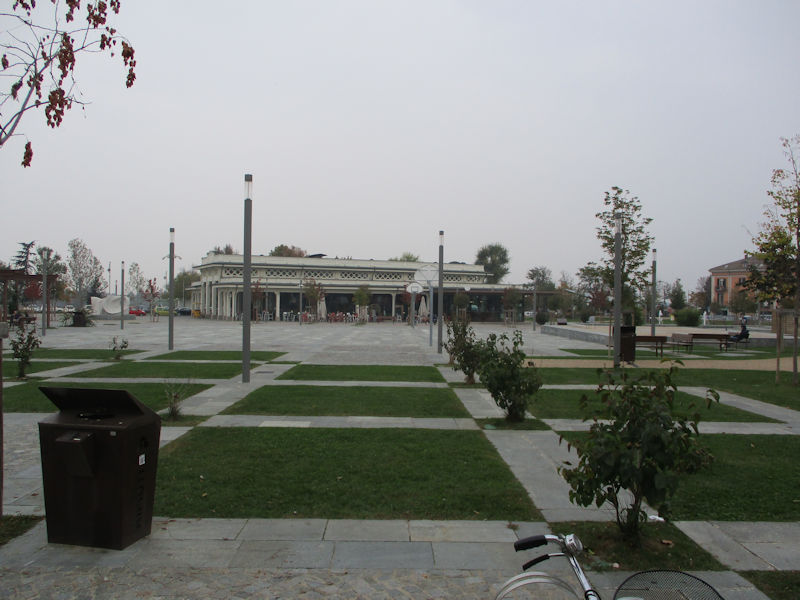
At the end of the Via Pascali overlooking the lower town to the north, and opposite the Tourist Information Office, this is the Open Baladin Cuneo, the local franchise of the Open Baladin chain of huge artisanal beer "pubs" and restaurants, in the Piazza Foro Boario.

A peek into the covered market. As a key stronghold of the important Duchy of Savoy, Cuneo was regularly attacked and besieged by the French, in 1515 by Francis I's Swiss mercenaries, later in 1542, 1557, 1639, 1641, 1691, and 1744 (the city is said to be nicknamed the 'City of Seven Sieges'), none of which sieges were successful. It was not until Napoleon's invasions in the 1790s that Cuneo was conquered militarily, but during the long Savoyard period it had devolved from a thriving commericial free city into a closed military stronghold, reduced in size, population, and purpose.
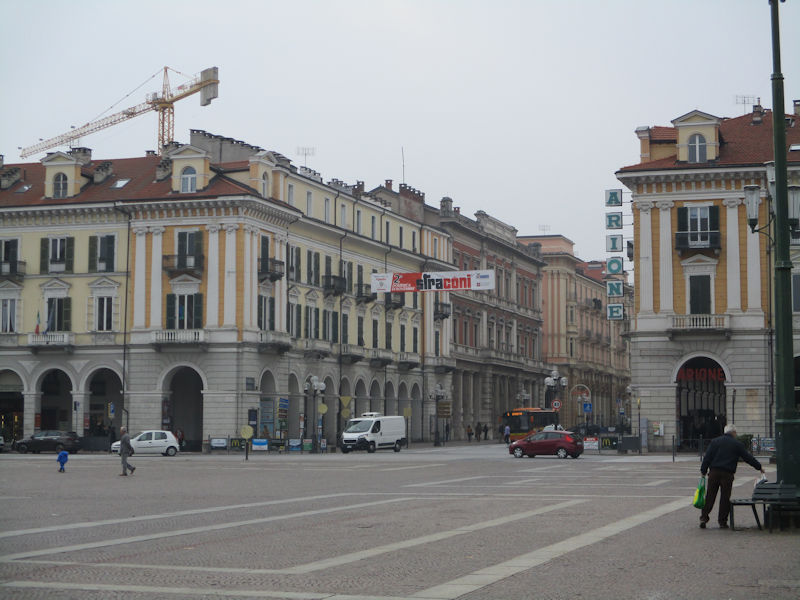
We're told that the 'medieval' part of Cuneo extends from here, in the Piazza Galimberti, in a narrowing wedge shape 750m to the far end at the Piazza Torino, with this wide boulevard, the Via Roma, as its axis; so here we go.

The super-wide Via Roma, looking back at the Piazza Galimberti -- the Via Roma is also the commercial centre of the city, with continuous arcades on both sides for its entire length.

An African busker, a brilliant musician
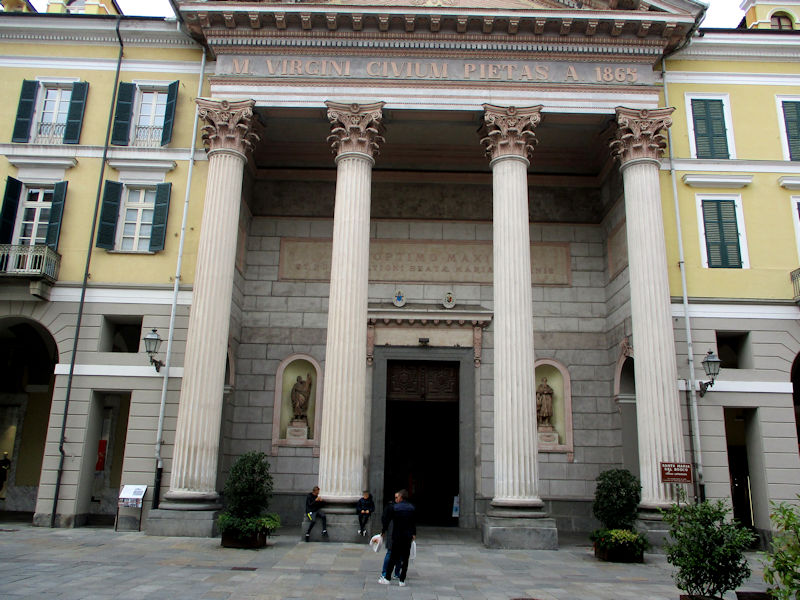
The rather unlikely looking Duomo, nestled in amongst the palazzi on the Via Roma.

The medieval Cattedrale di Santa Maria del Bosco ('of the Woods') was a dependent of the Benedictine Abbey of Borgo San Dalmazzo but was restored in the 15th and 16th centuries. When that building was collapsing in 1656, the present building was begun, and it was enlarged during repairs after damages caused in the siege of 1744. The neoclassical façade was designed to bring the church directly into line with the street and the other buildings, and the dome was added in 1832.

The picture of the Madonna and Child with saints (presumably Cuneo's ubiquitous patron saint, the Archangel Michael, on the left side of it) is said to be by the Jesuit artist Andrea Pozzo, most likely in the 1670s when he was working in Mondovì and Torino.
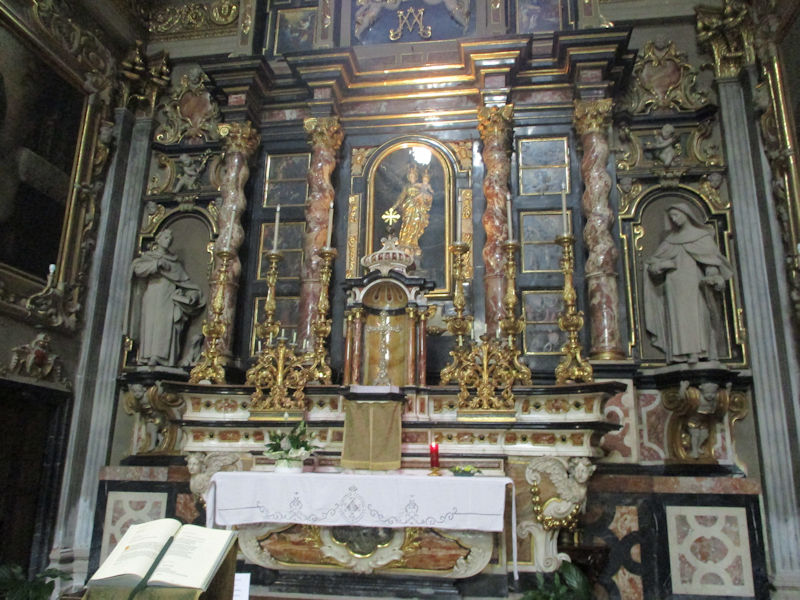
Twisted porphyry columns in a side chapel

The Archangel Michael doing what he does best
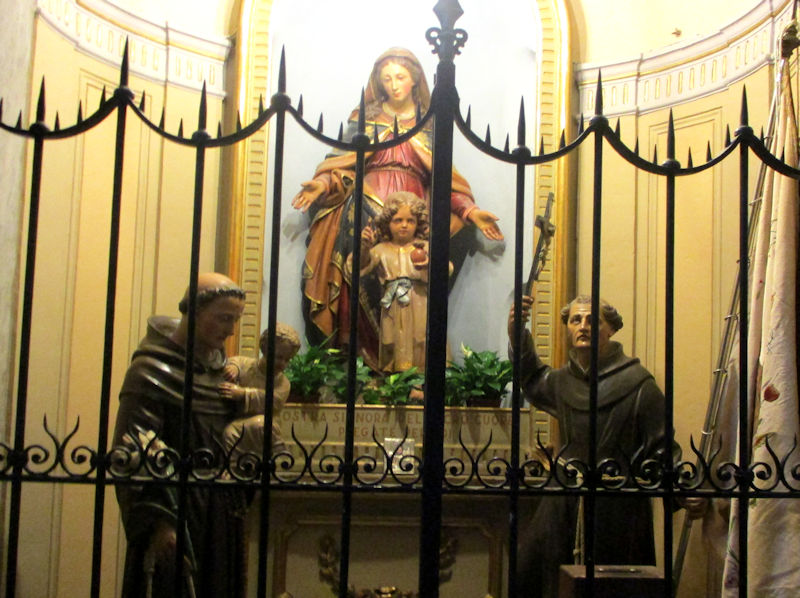
Today's entry in the Weird Baby Jesus contest
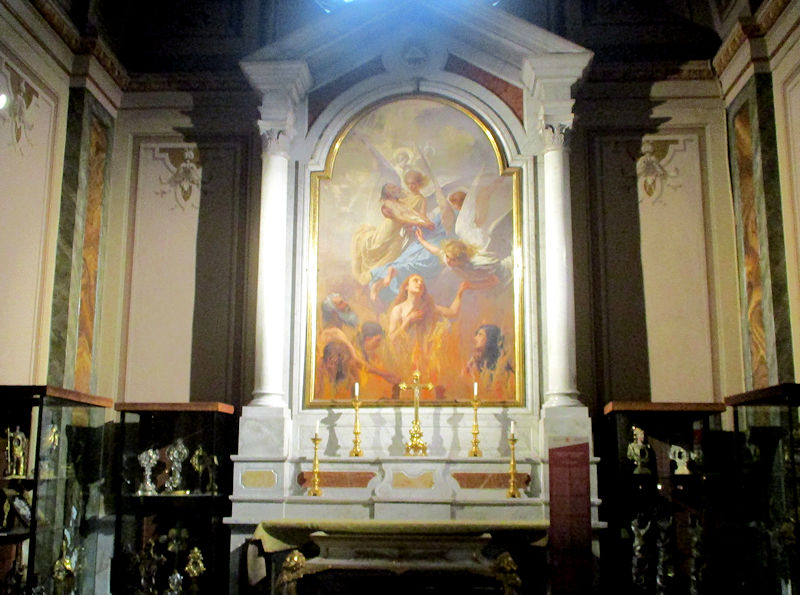
A timely reminder for any parishioners who might be weakening in their virtuous commitments
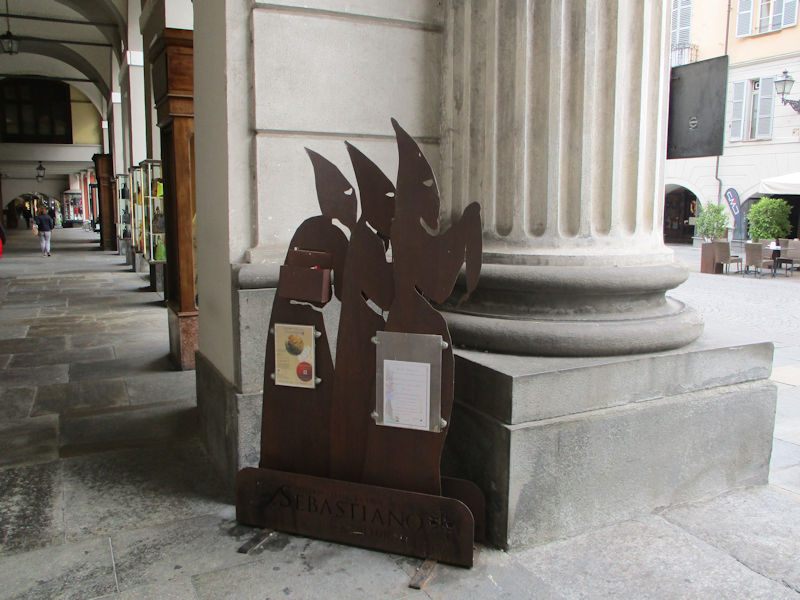
The men in hoods are back.

The Via Roma is flanked along its length by impressive palazzi, and there is apparently an ongoing project of renovating them.

All the way along, as here, we find very smart and bright-looking building, over the arcades, with out front an information panel showing before and after photographs with text.
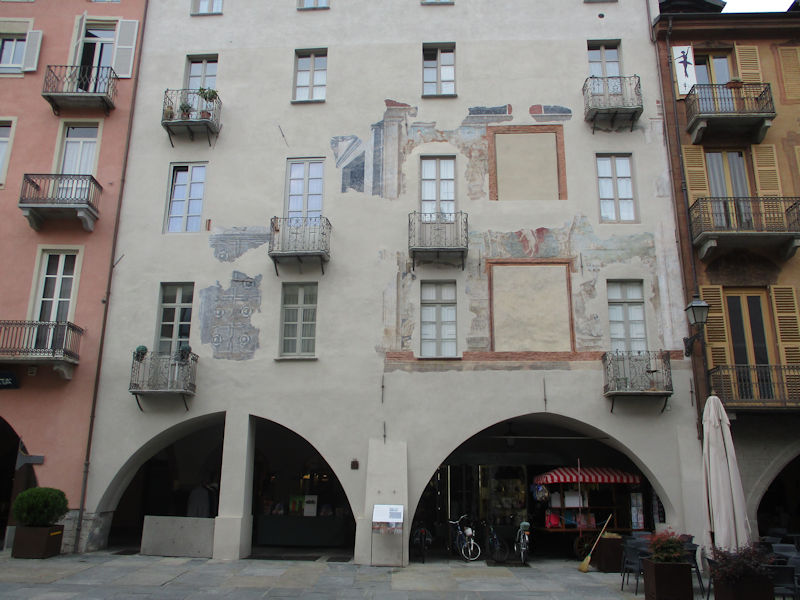
Another, preserving what could be saved of the old decoration of the façade
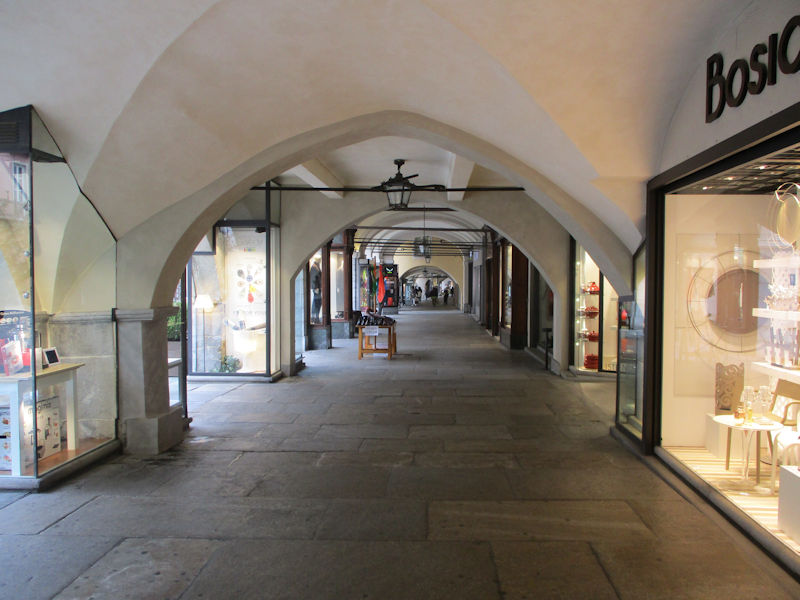
Upscale shops all the way along the street
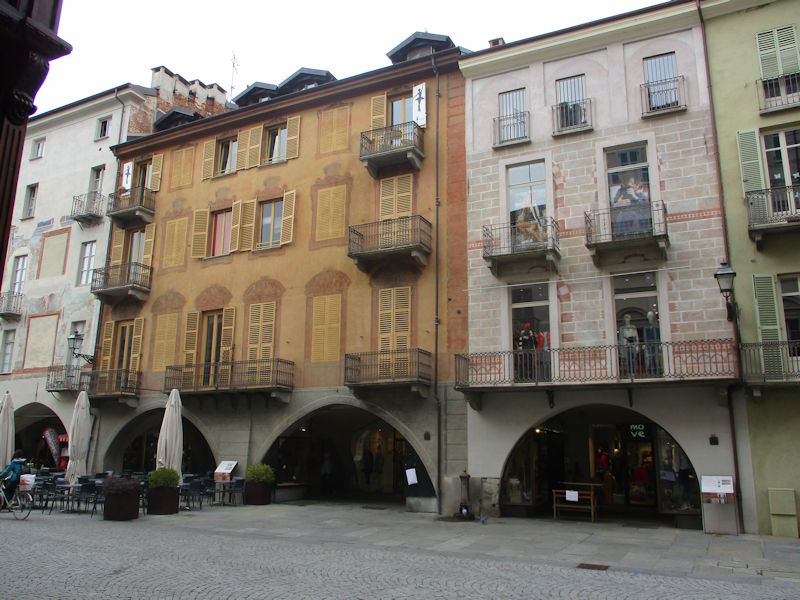
Two more fine renovations, with information panels

The Cuneesi seem to be making a point of this long, unbroken shopping experience protected from the elements by the arcades . . .
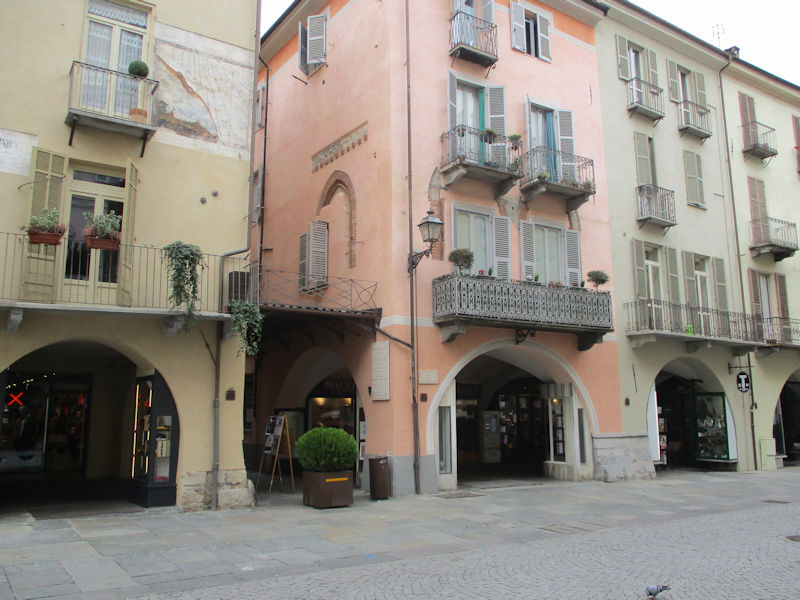
. . . because at every side street, there is a protective metal awning bridging the brief gap overhead.

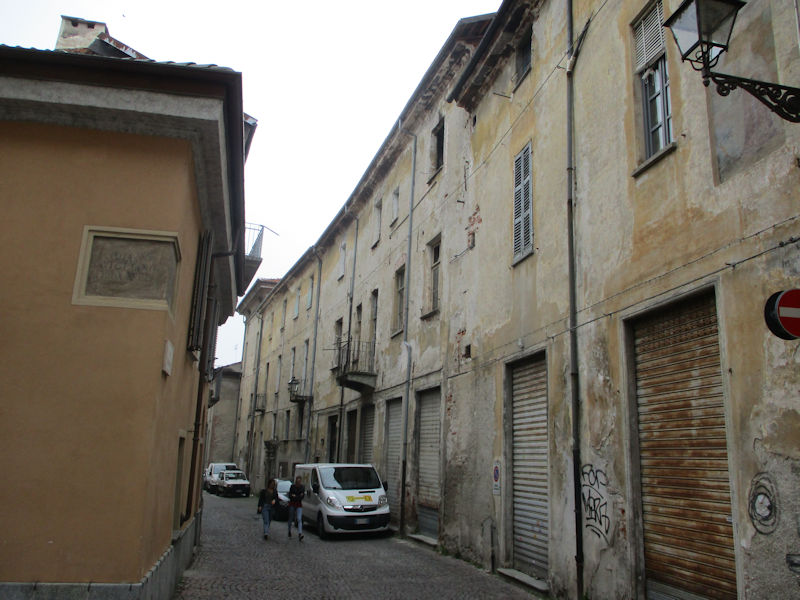
We're entering the Contrada degli Ebrei, or Jewish district (or ghetto), on the Via Chiusa Pesio.
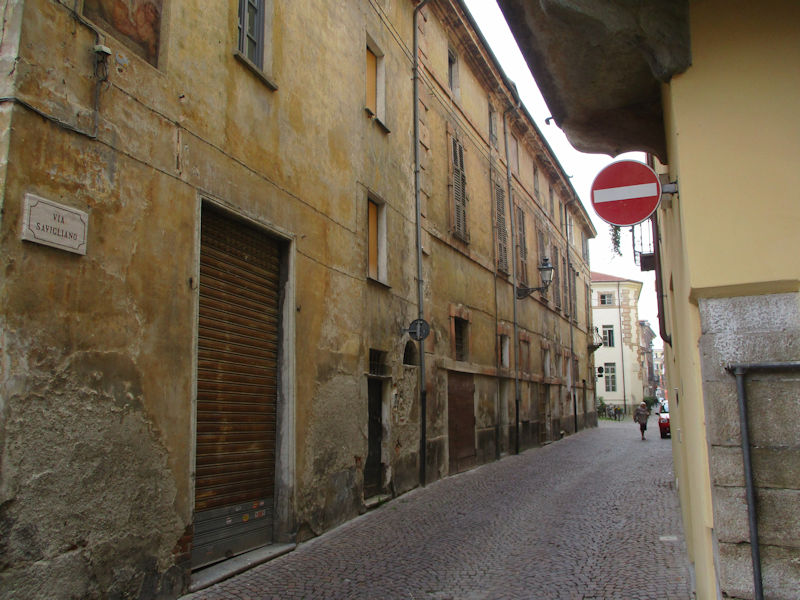
One block over that way (where we didn't think to go) is the Chiesa di Santa Chiara, or St Clare's Church, where on 7 April 1859 Giuseppe Garibaldi came to inspect the first contingent of his famous Cacciatori delle Alpi, or Hunters of the Alps brigade, who were quartered in the former convent of the Poor Clares.

The intersection of the Contrada Mondovì and the Via Savigliano

Likewise
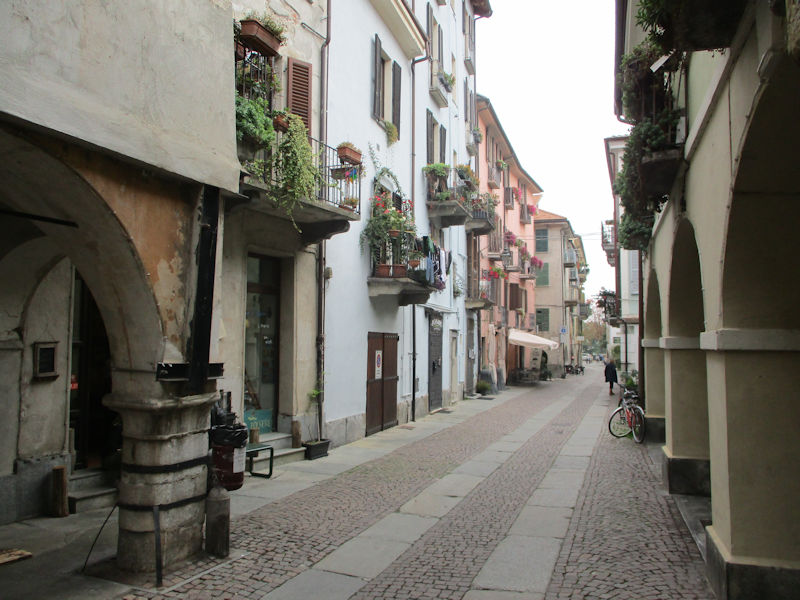
Along the Contrada Mondovì


More reminders of the threats of the afterlife

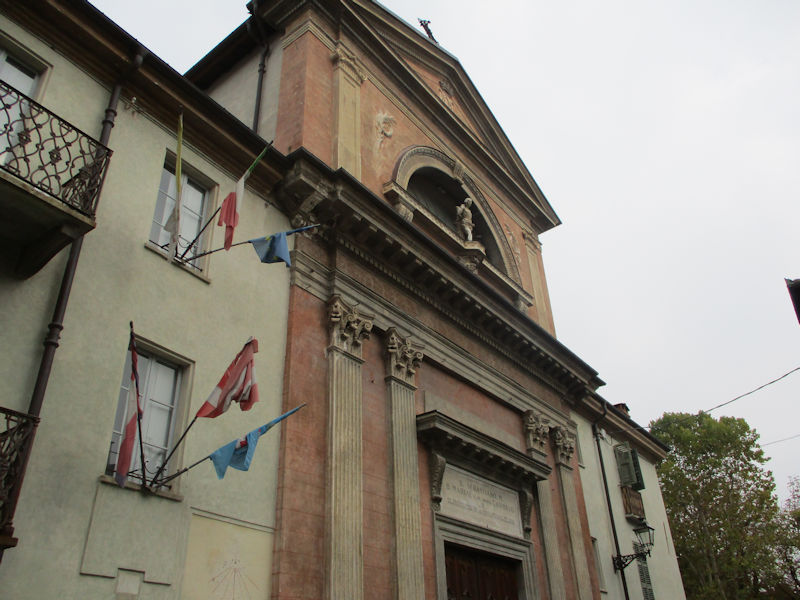
The Church of San Sebastiano from 1320, at the end of Mondovì Street, was rebuilt in 1557, following damages to a medieval original in the 1557 siege; the present façade was brought out to the street in 1663, and much of the interior was revised in the 18th century. The present neo-Gothic façade, side chapels, and dome were completed in 1844.

There are said to be works here by notable artists, but not very much to our tastes.

We've reached the end of the Via Mondovì at the Lungogesso Giovanni Ventitreesimo, which binds in the medieval quarter atop the slopes leading down to the river Gesso. (The analogous road along the far side of the old town 'wedge' is the Lungostura John Fitzgerald Kennedy.)

The Osteria del Colori, at the end of the Via Mondovì

The Lungogesso Giovanni Ventitreesimo at the edge of Cuneo's upper old town, overlooking the river Gesso, named for Pope John XXIII
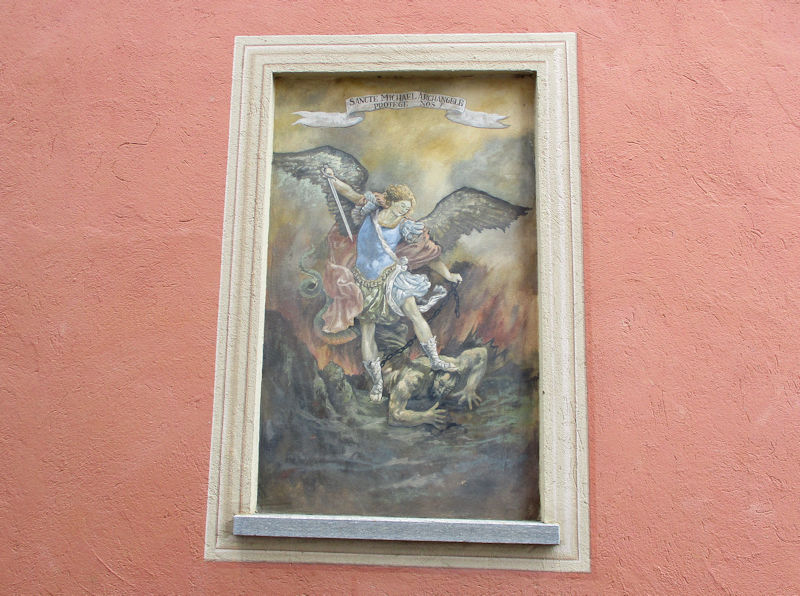
Cuneo's ubiquitous Archangel Michael ('Saint Michael Archangel, protect us')
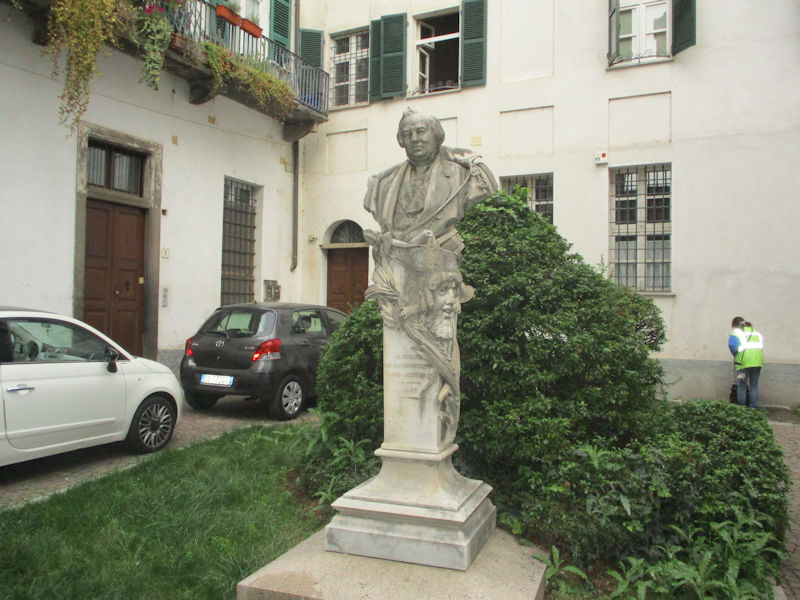
A statue of Giovanni Toselli (1819-1886), a well-known Piedmontese actor who joined Garibaldi's volunteer army in 1848 and created his own popular theatre in Cuneo in 1863.
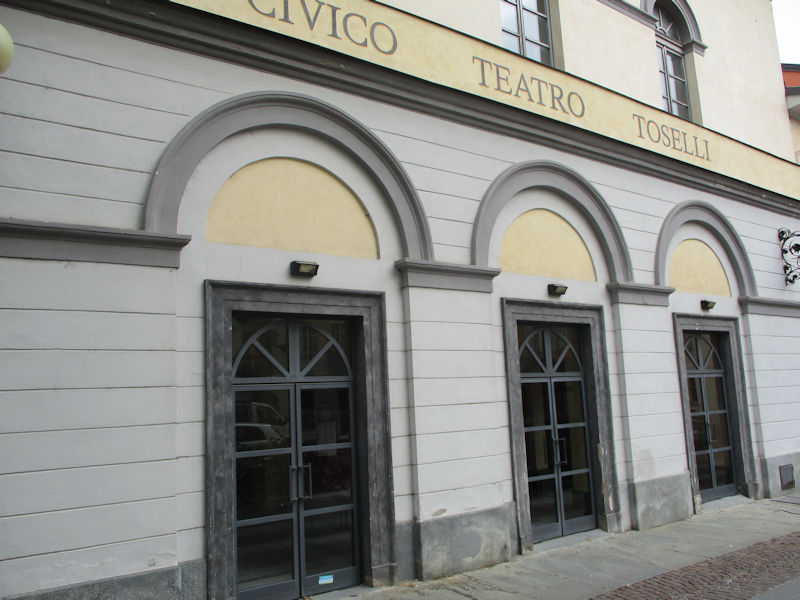
Here, adjacent to the statue, is the city's Civico Teatro Toselli, a building first opened in 1803 and enlarged in 1828, and renamed for Toselli in 1919.
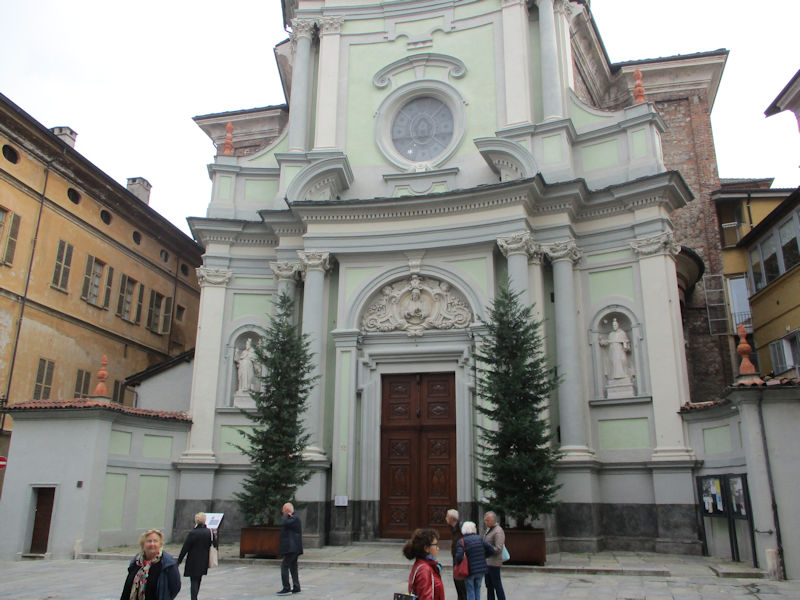
The Chiesa di Sant'Ambrogio, or St Ambrose: We're told that the first church was built in 1230 with the help of Milanese Guelphs of the Lombard League, who'd come to help Cuneo rebuild after the destruction caused by the Ghibelline coalition (the Milanese were particularly fond of St Ambrose) -- after the Duke of Savoy, Emmanuel Philiberto, built his fortress or citadel here near the point of the Cuneesi 'wedge', the church fell into ruins. The present church was designed by Francesco Gallo and begun in 1703, and consecrated in 1743. It's closed at the moment, but from the look of it, that's okay for us.
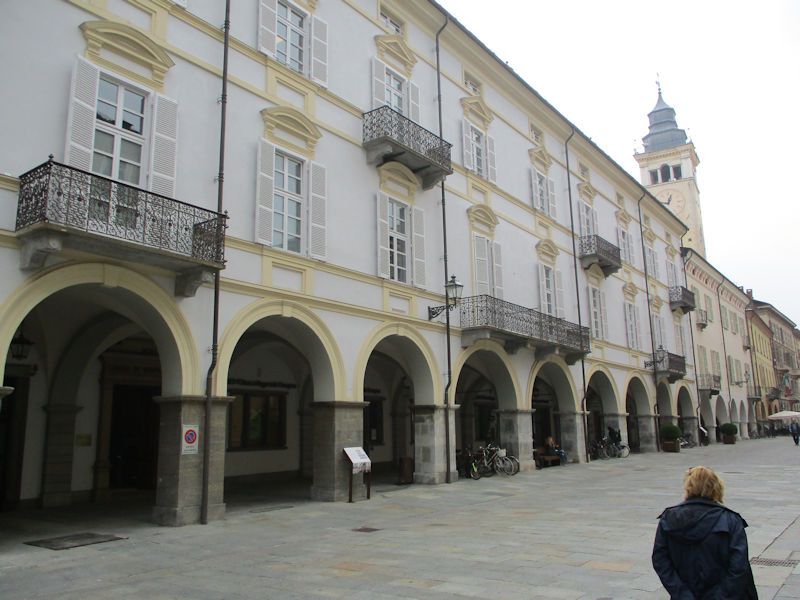
Back onto the Via Roma and headed downtown
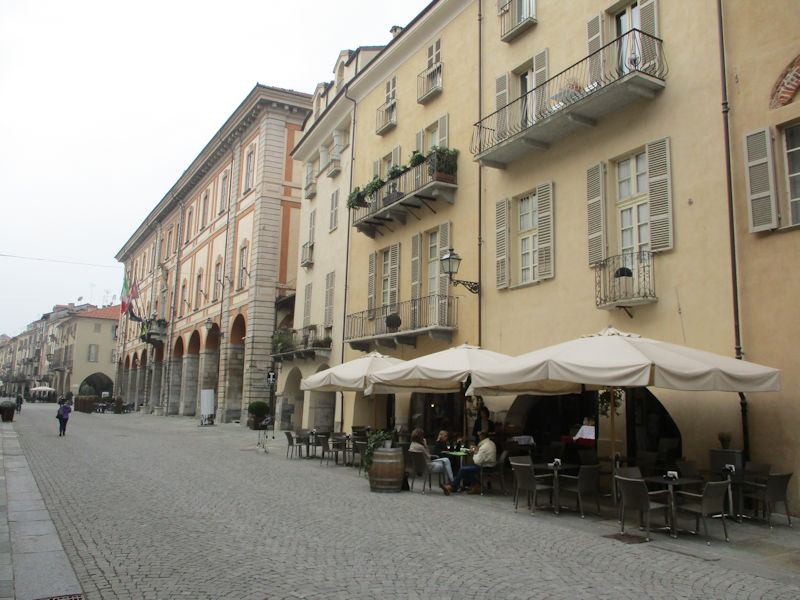
The view towards the present city hall and . . .
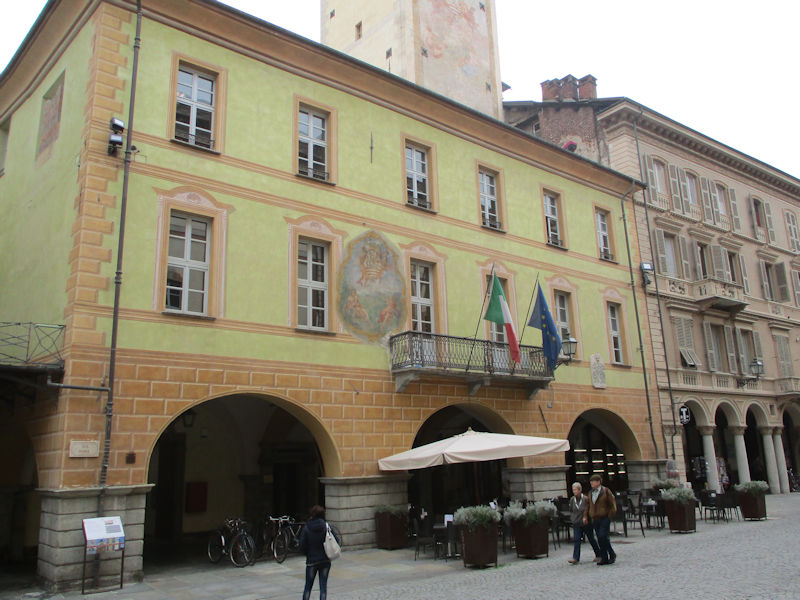
. . . across the street, the Palazzo della Torre, the tower of which is attested from 1240; the building served as the city hall until 1775.
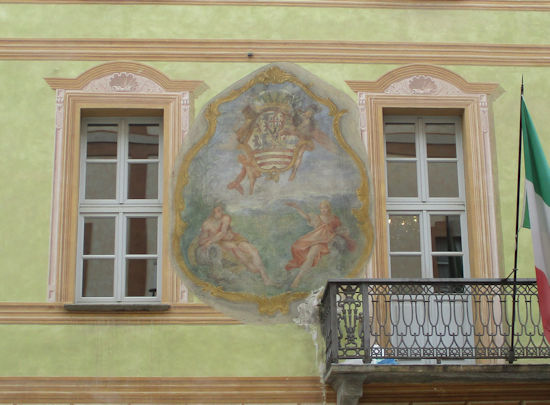
The fresco on the wall, painted in 1858, shows the emblem of the city above figures representing the rivers Gesso and Stura.
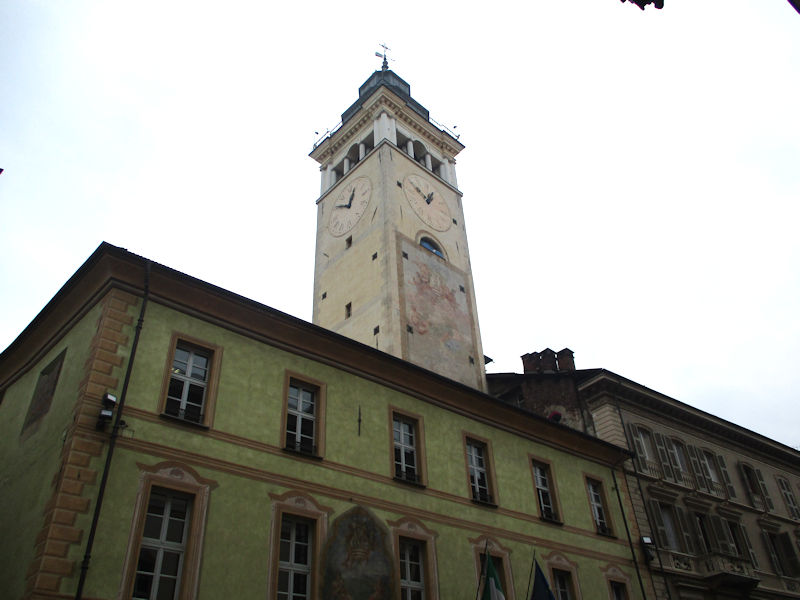
The belltower of the Palace of the Tower

The City Hall itself, in a former 17th century Jesuit convent, with another heartfelt call for the 'truth about Giulio Regeni', the Italian student at Cambridge University who was tortured to death and dumped on the highway by Egyptian authorities in January 2016.

Street scene

An ancient doorway and some out-of-date newspapers
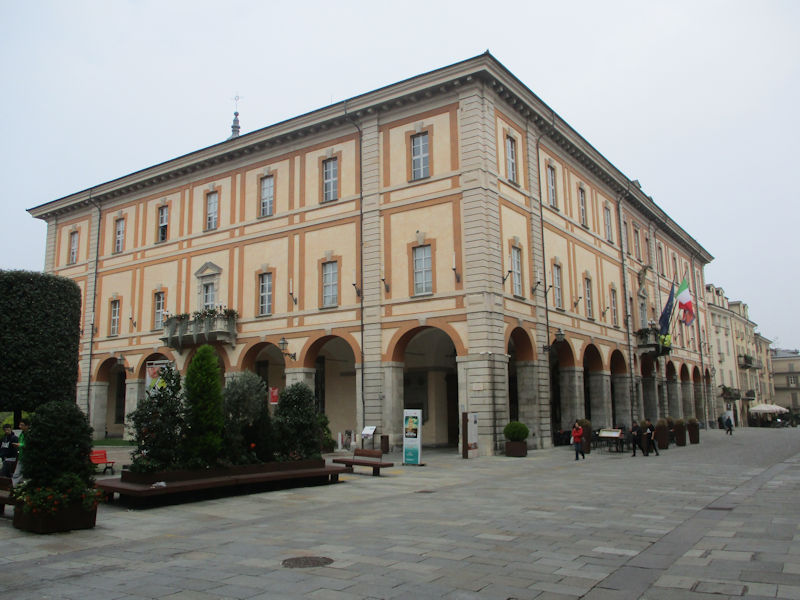
The City Hall again
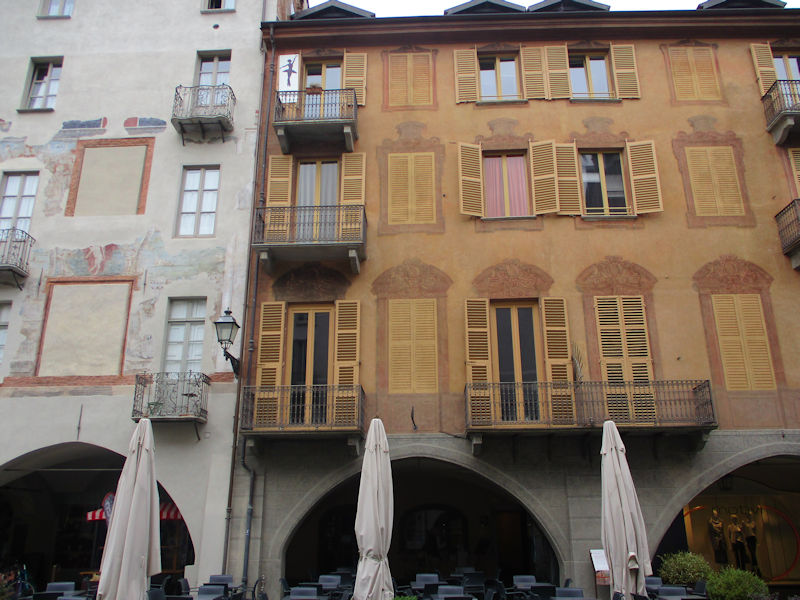
A restored palazzo
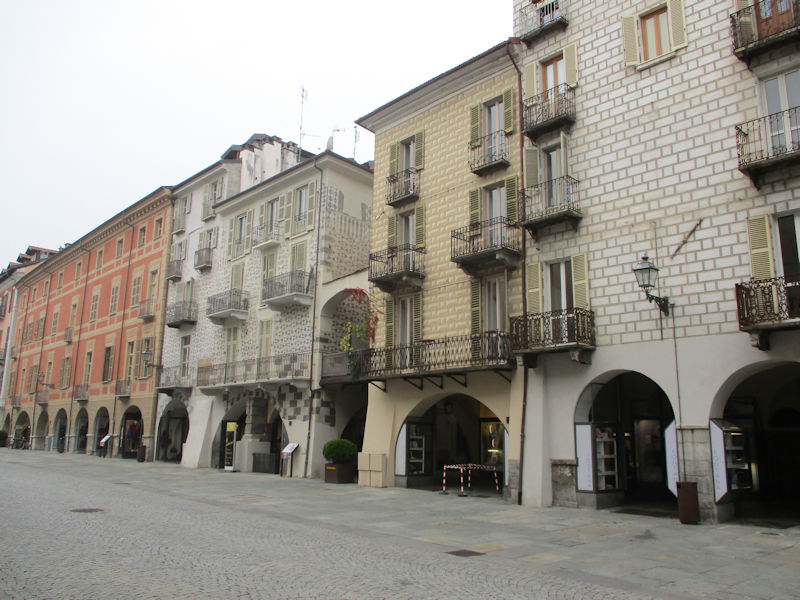
A cavalcade of restored palazzi

Street scene

Urban levity

Back to the Duomo, under one of the metal awnings over the passage

The street musician with his novel instrument
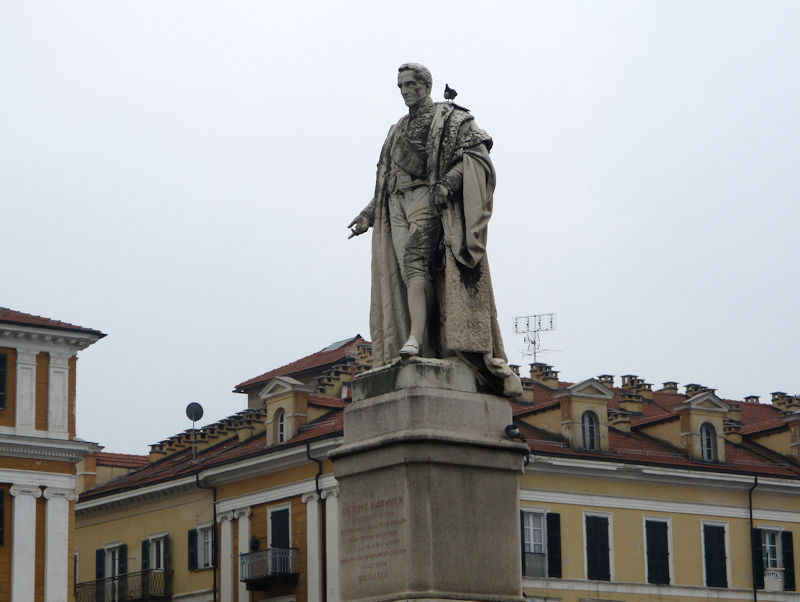
Back in the Piazza Galimberti, this statue in the centre, with its obligatory pigeon, is dedicated to Giuseppe Barbaroux (1772-1843) of Cuneo, a distinguished lawyer (it's only dedicated to Barbaroux, not the pigeon).

 Dwight Peck's personal website
Dwight Peck's personal website



























































